 Marijana Gligoric
Marijana GligoricGuide to 2024 SaaS pricing: strategy, models, statistics, and examples

Did you know that improving one particular part of your business by 1% can lead to an increase of 12.7% in profit?
It might sound crazy, but many SaaS companies don’t even consider it thoroughly at the beginning of their business journey.
Can you guess what that thing is?
Believe it or not - it’s pricing!
Pricing directly influences revenue.
Unfortunately, most SaaS companies spend less than a working day on it.
This is the worst business mistake because the right pricing strategy can help you get ahead faster than anything else.
To set yourself up for pricing success you need strategic SaaS pricing and this article is here to help.
Why is pricing important?
Pricing improves growth by 4x more than customer acquisition and is 2x more effective than any other effort to increase retention. This statistic alone is enough to prove why pricing is important.
Pricing determines how much money your SaaS product brings in. This number can break you or make you in the long run. A good pricing plan, strategy, and model can ensure market success.
Unfortunately, when making pricing decisions, almost any SaaS company doesn’t put much thought into it.
You need to change this if you want to increase your revenue without changing anything about your product.
If you price your product the right way you ensure that the profit you make is here to stay. This doesn’t just sound good because it rhymes but because it’s actually true.
Numbers don’t lie!
Some pricing statistics
-
59% of companies in their early stages don’t price their products right
-
There are over 40 popular pricing strategies that increase profit but most use the same 3
-
60% of buyers online list that pricing influences their buying decisions more than anything else
-
Different price points, such as tiered pricing or charm pricing, can significantly impact consumer behavior and increase sales by 60%
-
50% of consumers judge businesses based on pricing and think that expensive products have better quality than cheaper ones
-
80% of customers consider buying a new product because of pricing changes
-
Every 3 minutes big companies change their prices while SaaS businesses do it yearly (or not at all)
-
Psychology pricing boosts sales by 60% but SaaS companies usually miss out on this
Your SaaS pricing needs to increase A LOT
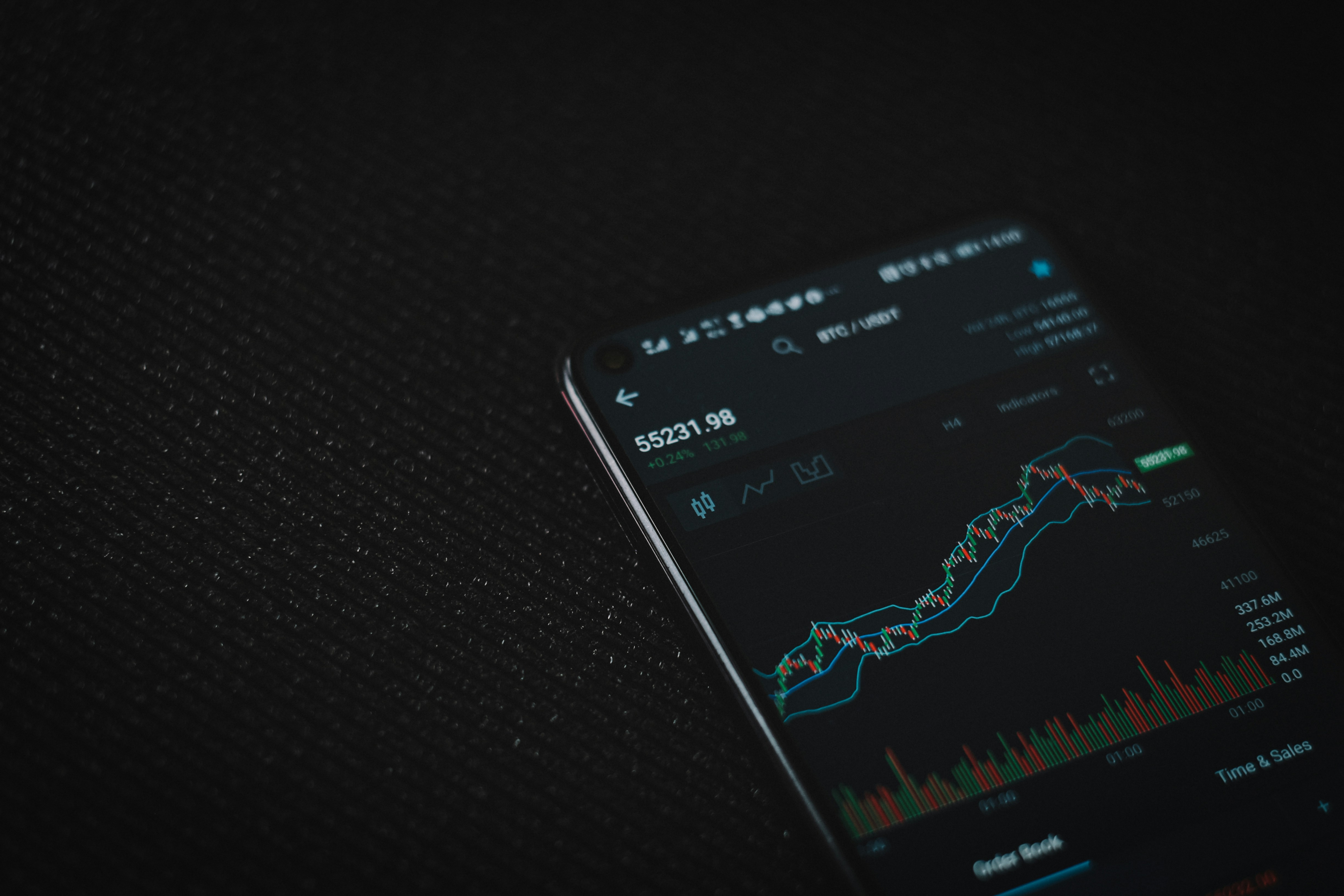
SaaS companies need to change their prices often to stay competitive. Market trends and customer demands shift quickly. If prices stay the same for too long, you will lose out.
Setting up good SaaS pricing models and strategies from the start of your business is the best way to go about pricing.
However, if you are reading this chances are your prices are already set. But don’t worry because brigit.dev is here to help.
First, you need to be aware that your competitors and big companies are focusing on pricing more than you think. They re-evaluate their pricing strategy every three months and change it twice a year.
Second, you need to realize that the CEOs are not doing this randomly. They have a pricing committee and you need one too. Here's why.
Pricing committee

To make the best pricing decisions and pricing strategy you have to optimize the decision-making process. You need to focus on data and where you want to go.
Demand. Costs. Profit.
Everything else is out of the window.
To do this you need people who will focus only on this work when needed.
You need a pricing committee.
The purpose of this committee is to observe, collect data, and present a plan. They will say what needs to be changed and point you in the right direction.
But who should be on this committee?
Well, no matter how big or small your SaaS company is you have different departments. The committee should consist of people from sales, finance, product, and marketing. It's also very important to make it clear who is the final decision maker. Without it, your committee will probably fail because their points of view and priorities will be different.
Once established, a good pricing committee will help you make the best decisions on time.
What does the pricing committee do?
They perform:
-
customer analysis
-
market analysis
-
cost analysis
-
competitive analysis
-
impact analysis
They create a:
-
testing strategy
-
delivery strategy
-
launch strategy
Also, analyzing the pricing page is a crucial part of the committee's work.
They will also make sure everything complies with company business models, plans, and policies as well as local and international regulations.
It is important to note that all this work for each member is just a fragment of their primary job. So don’t expect fast results.
It will probably take a couple of weeks.
Good things take time.
What can you expect?

With the pricing committee, you will be able to make smaller changes every three months and bigger changes twice a year. HubSpot does this and they are leaders in their industry. Just remember to check in every quarter.
To help you paint the picture it's important to understand what exactly can you expect.
Here's a list of some smaller changes:
-
Moving features from one pricing plan to another or adding new features to set the ground for major price changes
-
Reducing or removing discounts altogether to make their impact bigger when they are available
-
Removing certain features from plans or limiting their use so you can add them later and charge more accordingly
-
Review and change your marketing and advertising campaigns; the way your brand is perceived directly influences how much customers will pay to be associated with your brand
These changes are not about changing numbers or raising prices, but pushing changes that will let you raise prices and make it seem logical for your customers. Also, these changes should be done according to costs, inflation, and market shifts.
Some bigger changes:
-
Raising or lowering your prices
-
Changing plans by expanding them or removing them
-
Setting up free trials or limiting them
These changes will be noticed once they roll out so make sure you explain why you did it and how it helps deliver the best customer experience.
Of course, don't force any of this. Do it naturally so it makes sense to you, your team, and your customers. Also, the pricing committee can't help you if your pricing model or pricing strategy sucks.
But there is help! We have a 5-step plan for you.
5 steps of successful SaaS pricing + examples

In order to improve your pricing strategy and stay on top of pricing you need to understand these five steps that will guide you throughout the process.
One of the key steps is to familiarize yourself with popular SaaS pricing models, such as monthly or yearly subscriptions, pay-as-you-go models, one-time-use models, and tiered pricing.
You don’t have to follow anything to the letter, but just make sure you are familiar with all the terms. Try to learn from examples and see what resonates with you the most.
1. Value creation
The first step in your pricing journey should be understanding why your product is worth paying for.
Creating value is about what makes your product stand out amongst others. It's important to know which features and functions make your product different. Once you nail it you need to show it to users so they understand what exactly they are paying for. For this to work you need to do market research and customer research.
Market research
It helps you understand the industry and what your competitors are offering. It shows you what customers expect and what is already available. This information helps you show why your product is different and better for customers. If you can explain to users that what you offer is better than what's out there they will be more willing to purchase your product.
Customer research
It is all about learning directly from your customers. Ask them what they like and dislike about your product. Find out what problems they have and how your product can help solve them. This helps you show users what problems you are solving for them and with what features. It also helps you understand what features they are willing to pay for the most.
After understanding this you need to choose a pricing model and a pricing strategy that will align with your business.
2. Pricing models (pricing policy)
To translate the value of your product into pricing you need to choose how to charge. You need a good SaaS pricing model.
You might have noticed that we don't mention competitor-based pricing because we believe that this model is not worth mentioning. This is especially true for SaaS because market changes are so fast. If you don't have a solid foundation based on your data and needs you can lose a lot.
We have explained and analyzed 7 different pricing models you can use to make this part of your pricing journey easier.
1. Flat rate pricing model
Flat rate pricing is the simplest strategy. You charge a fixed price for a product with a set of features, regardless of usage. If you have very predictable costs this option is great.
Pros:
-
Customers understand it more easily and are more willing to buy
-
You can sell it more easily because you focus all your efforts on a single offer
Cons:
-
You can lose profit if enterprises purchase your product since they will pay the same price as common users (but will use it on a larger scale)
-
Customers will either be ready to buy or not; there is no in-between
Example: Dribble
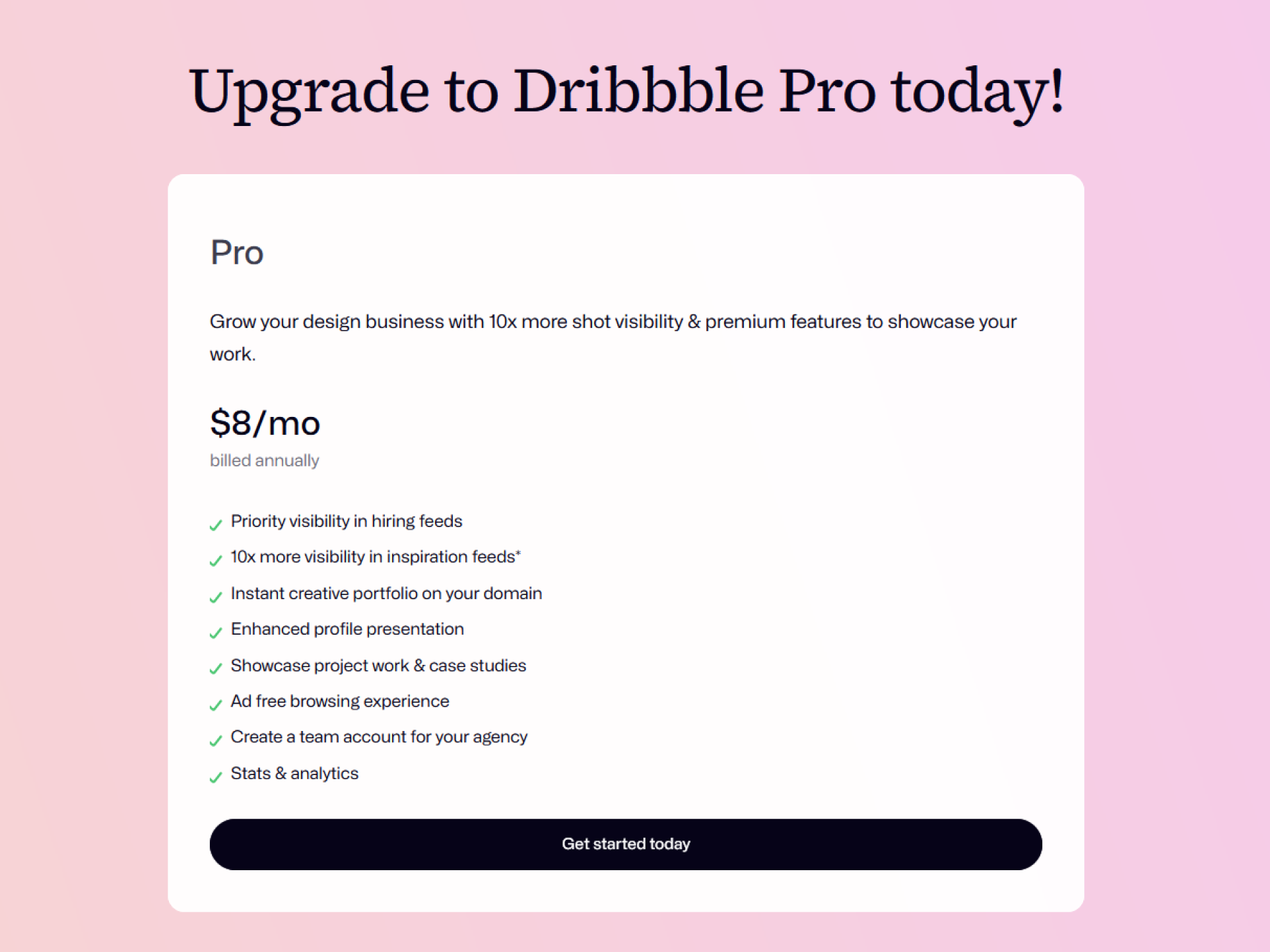
2. Usage-based pricing model
Usage-based pricing, also known as pay-as-you-go, charges customers based on how much they use a product. This model aligns cost with consumption, making it fair for users who pay only for what they use.
Pros:
-
The price is proportional to the usage and costs you have
-
Users are more likely to purchase your products as a barrier to entry is lower
-
It's easier to sell and market
Cons:
-
It's harder for you to predict revenue and calculate profit
-
It's harder to predict customer costs and analyzing their behavior is more complex because they all use the product differently
-
Your income will fluctuate, some months you will earn more some others less
Example: AWS

3. Tiered pricing model
Tiered pricing offers several packages with different features at different prices. This allows customers to choose a plan that best fits their needs and budget. Enterprise pricing is one of the best pricing packages you can add because you can agree on a price that fits all and increases profit.
Pros:
-
You can target multiple customer segments with different needs
-
Even if the users are willing to buy only the cheapest package, over time there is a higher chance for them to convert to a higher tier
-
You can make the higher pricing tiers look better when compared to lower tiers
Cons:
-
Users can feel confused and have a hard time choosing
-
Some users will probably be dissatisfied with the way you distribute features within packages and will likely look for a cheaper alternative
Example: SurferSEO
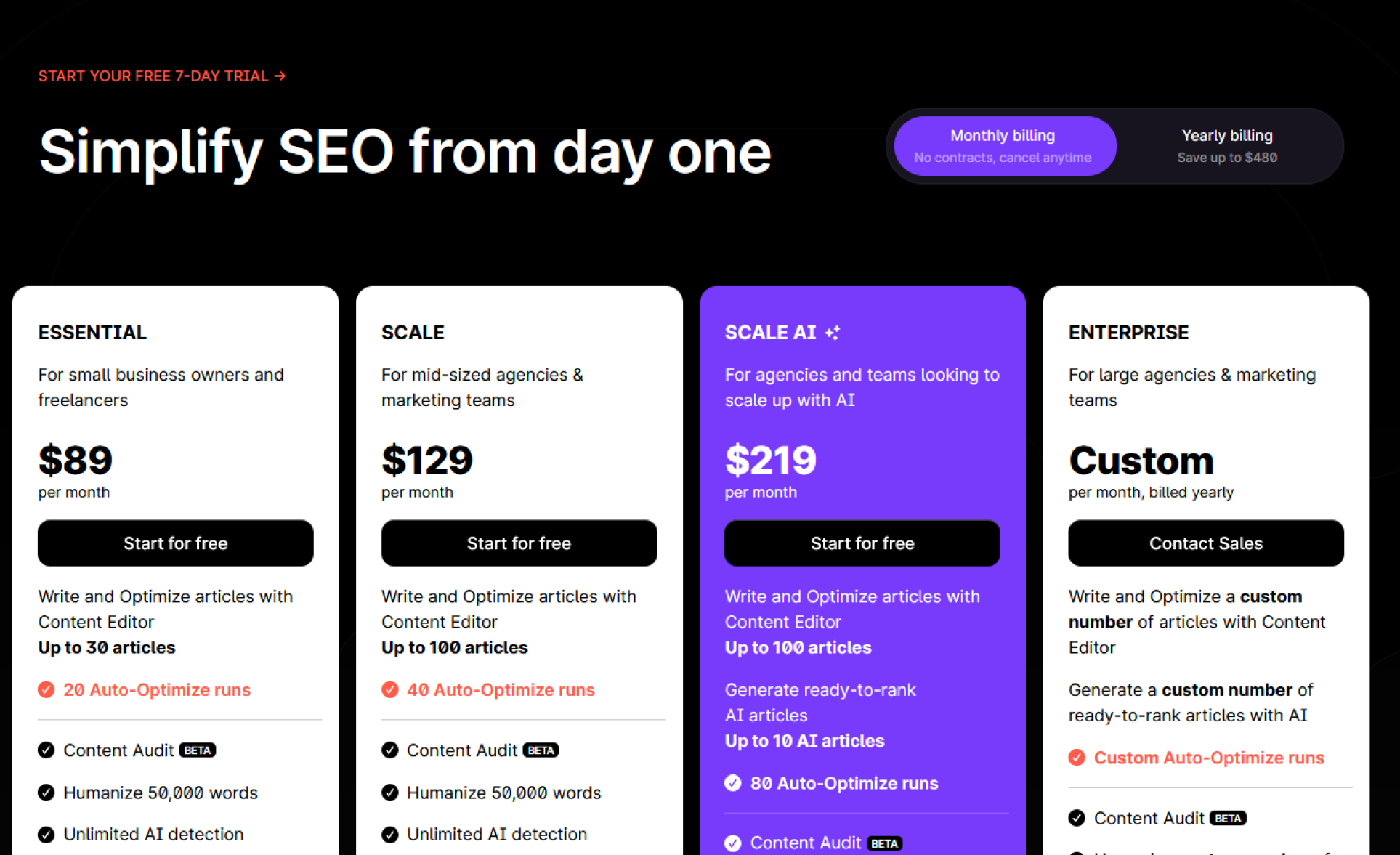
4. Per-user pricing model
Per-user pricing charges customers based on the number of users who will access the product or service. This model makes pricing scalable with the size of the customer’s organization so it's very popular for B2B and enterprise companies.
Pros:
-
It is a simple way to price
-
Everything is very predictable because you know how many people are using your product every minute
-
If your sales and marketing teams do their work right you will be able to scale quickly
Cons:
-
Users will probably share access to accounts to avoid spending more
-
It can confuse and repel customers because they don't care to calculate the prices
-
Revenue is never set because users can be added or removed at any time so you might not be able to predict profit so easily
Example: Toggl Plan
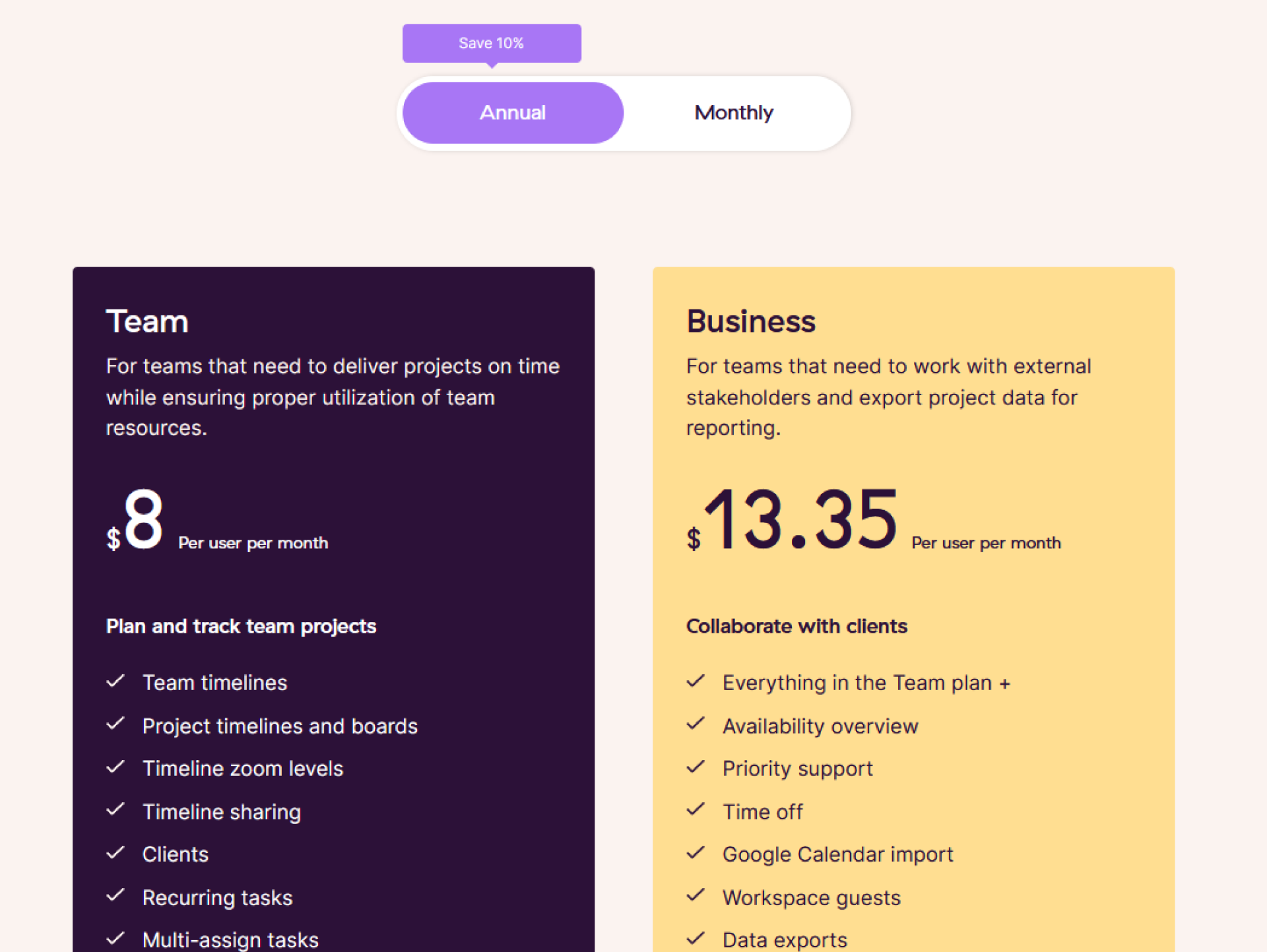
5. Per-active-user pricing model
Per-active-user pricing is similar to per-user pricing, but customers are charged only for users who actually use the service within a billing period. This model ensures customers pay only for the value received, making it attractive for organizations with fluctuating usage.
Pros:
-
Enterprise companies are more likely to purchase your products because they view it as a less risky and cheaper option
-
Customers feel like they are paying less and getting a better deal so they are more likely to purchase
Cons:
-
Very big or very small teams might see this as more expensive and look for cheaper alternatives based on tires
-
Users can "cheat the system" and use one profile for everything making it seem like there are fewer active users
-
The revenue can fluctuate from month to month based on usage so it's harder to predict profit
Example: Slack
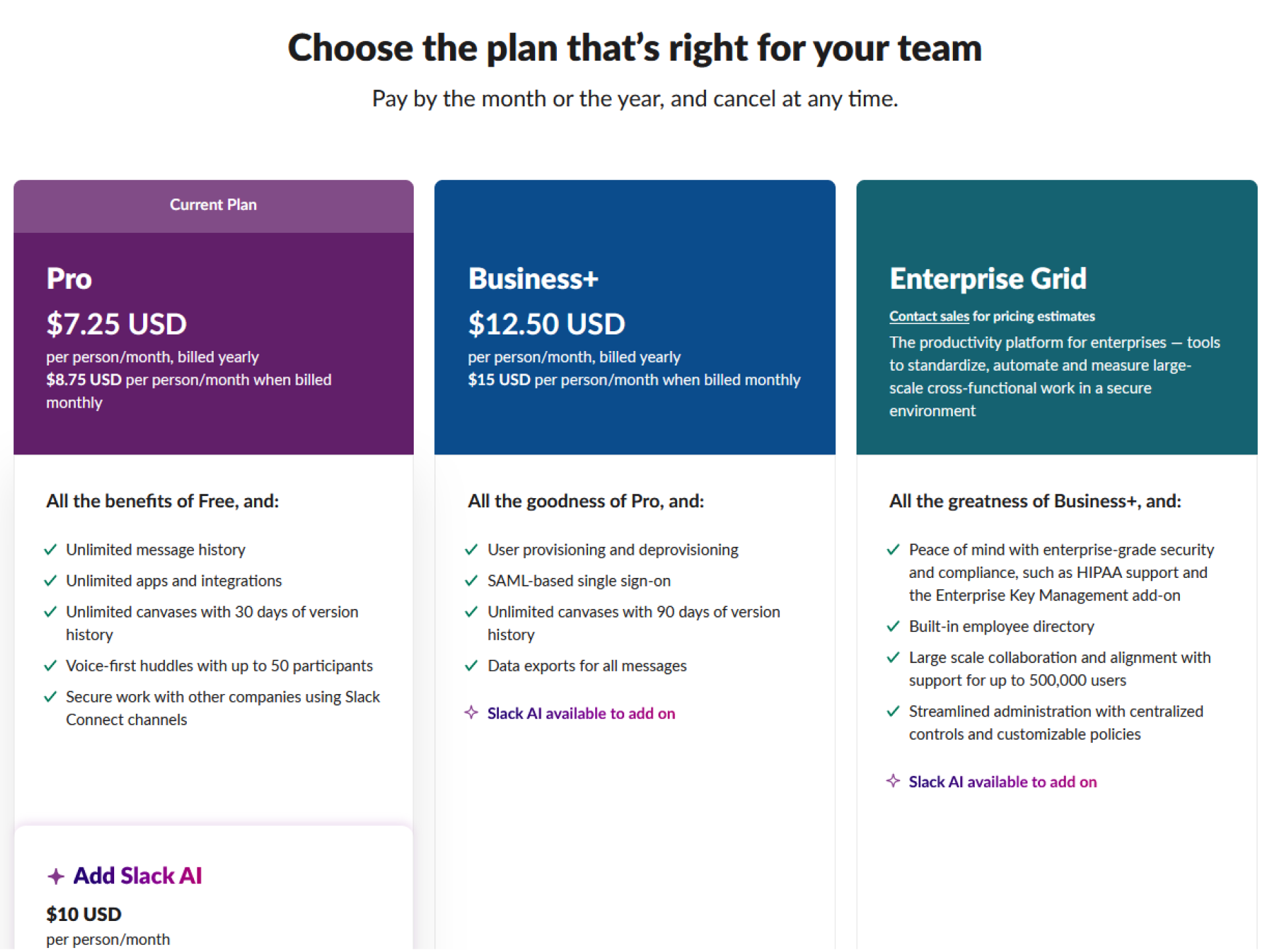
6. Per-feature pricing model
Per-feature pricing allows customers to pay based on the specific features they need in different packages. Instead of a one-size-fits-all package, customers can customize their purchases to include only the features they find valuable.
Pros:
-
Users are more likely to purchase your product because of the customized approach
-
You can generate additional revenue from users purchasing additional features
Cons:
-
It's hard to decide how to separate features
-
Too many options or additional features might confuse users
-
Users might go for other alternatives on the market if they feel like they are not getting their money's worth if the add-ons are charged too high
Example: GitHub
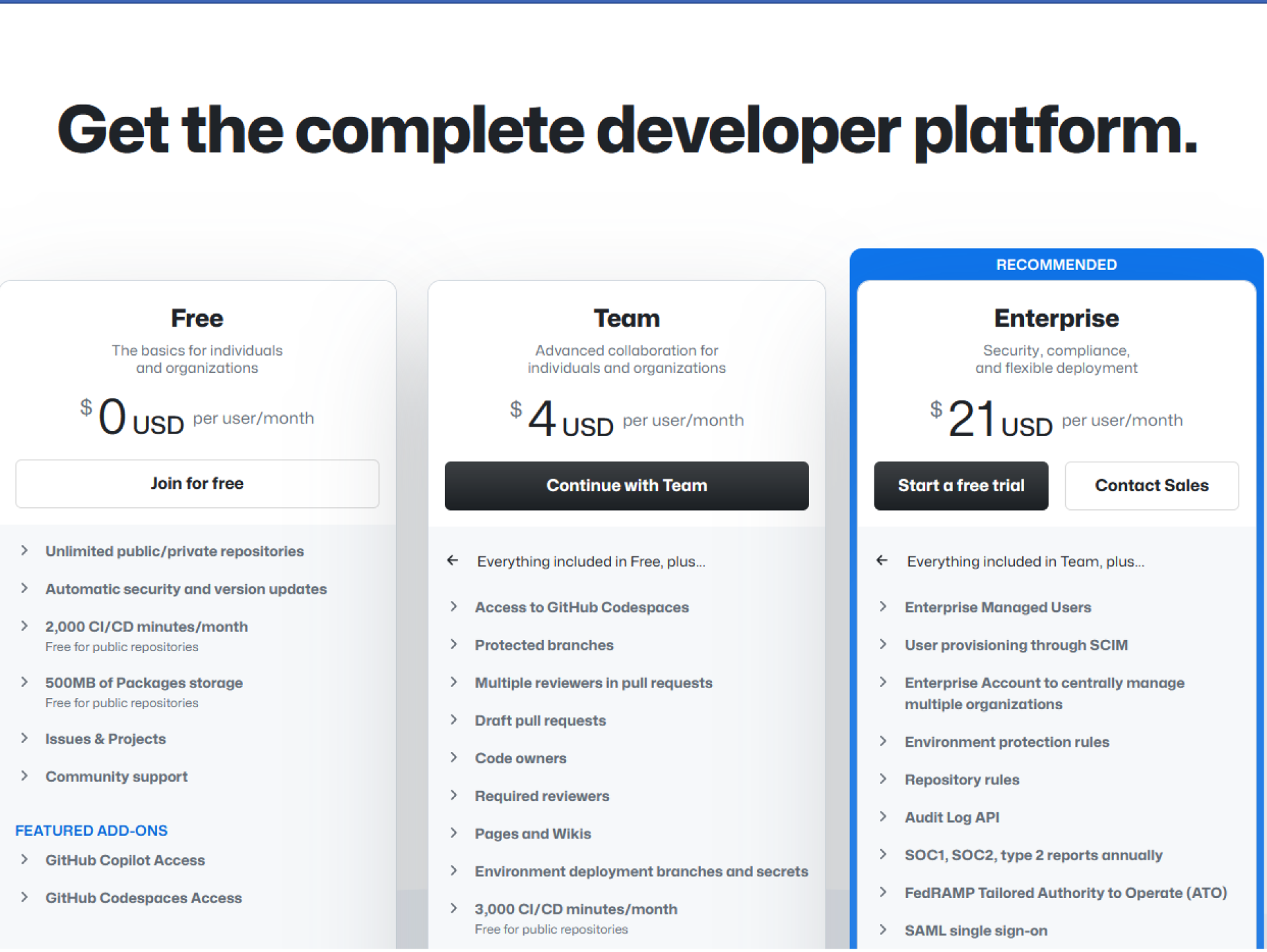
7. Freemium pricing model
The freemium model lets users access a product for free, with the option to pay for premium features or services. This model attracts a large user base with the free offering, converting a portion of users to paid plans.
Pros:
-
Users are more likely to use your product and then upgrade if they are satisfied
-
If you are just starting your business this is a great way to attract users and test out your idea
Cons:
-
Free users don't bring any profit
-
Some users will never upgrade as long as there is a free version
-
You can lose more than you earn
It's important to mention that you can always offer free trials. It offers an even better experience than freemium if users can explore all the features. In this case, they are more likely to start paying once the trial ends because they've seen how great your product is.
Example: Spotify (a great example for both)

3. SaaS pricing strategies (pricing structure)
Once you choose a pricing model the biggest part of the work is over. The pricing model defines how you charge your customers but the pricing strategy helps you sell. You need the best pricing strategy to help you with your objectives and goals.
Here are 7 different pricing strategies you can use to kickstart your strategic pricing.
1. Penetration SaaS pricing strategy
Penetration pricing is when a company sets a low price for a new product to attract customers quickly. The goal is to gain market share fast, even if profits are low initially. Once the company has a loyal customer base, it can gradually raise the price. This strategy works well in competitive markets where attracting customers early is crucial.
Example: Netflix used penetration pricing when it first launched. It offered low subscription fees to attract viewers from traditional cable TV.
2. Captive pricing strategy
Captive pricing involves selling a base product at a low price but charging higher prices for necessary complementary products. The base product attracts customers, while the complementary products generate profits. This strategy ensures ongoing revenue from customers who buy the base product.
Example: Razor companies like Gillette sell razor handles cheaply but charge more for the replacement blades, which customers need to keep buying.
3. Skimming pricing strategy
Skimming pricing is when a company sets a high price for a new product initially, targeting customers willing to pay a premium. Over time, the price is gradually lowered to attract more price-sensitive customers. This strategy helps the company maximize profits from different market segments.
Example: Apple often uses skimming pricing for its new iPhones, charging a high price at launch and reducing it later.
4. Prestige pricing strategy
Prestige pricing is when a company sets a high price for its products to give the impression of superior quality or exclusivity. This strategy targets customers who associate higher prices with higher value and are willing to pay more for perceived status.
Example: Luxury brands like Rolex use prestige pricing to position their products as exclusive and high-quality.
5. Free trial pricing strategy
Free trial pricing involves offering a product or service for free for a limited time. The goal is to let customers experience the product, hoping they will find it valuable and pay for it once the trial period ends. This strategy helps build customer trust and reduce the risk of trying something new.
Example: Adobe offers free trials for its Creative Cloud suite to attract new users.
6. Cost-plus pricing strategy
Cost plus pricing is a straightforward approach where a company adds a fixed percentage (markup) to the cost of producing a product to determine its selling price. This strategy ensures that all costs are covered and a profit margin is included.
Example: Many retail stores use cost-plus pricing by marking up the cost of goods to cover expenses and earn a profit.
7. Value-based pricing
Value-based pricing sets the product's price based on the perceived value to the customer rather than the cost of production. SaaS businesses don't have any production costs like material so they should focus on value. This strategy requires understanding what customers are willing to pay based on the product's benefits and how it compares to alternatives.
Example: Starbucks uses value-based pricing, charging higher prices for its coffee based on the brand experience and customer perception of quality.
4. Value communication
Once you've established your pricing it is important to present these prices the right way.
To do this you need to use psychology.
But understand that these techniques are not meant to manipulate customers into buying what they don't want. We are just trying to encourage them to buy what they already want.
Here's the full list with examples of how it's done right:
1. Price anchoring
Price anchoring involves showing a high price first to make subsequent prices seem lower by comparison. This technique relies on the psychological effect where the initial price sets a reference point in the customer’s mind. When customers see a higher price first, they perceive the following lower prices as more attractive deals.
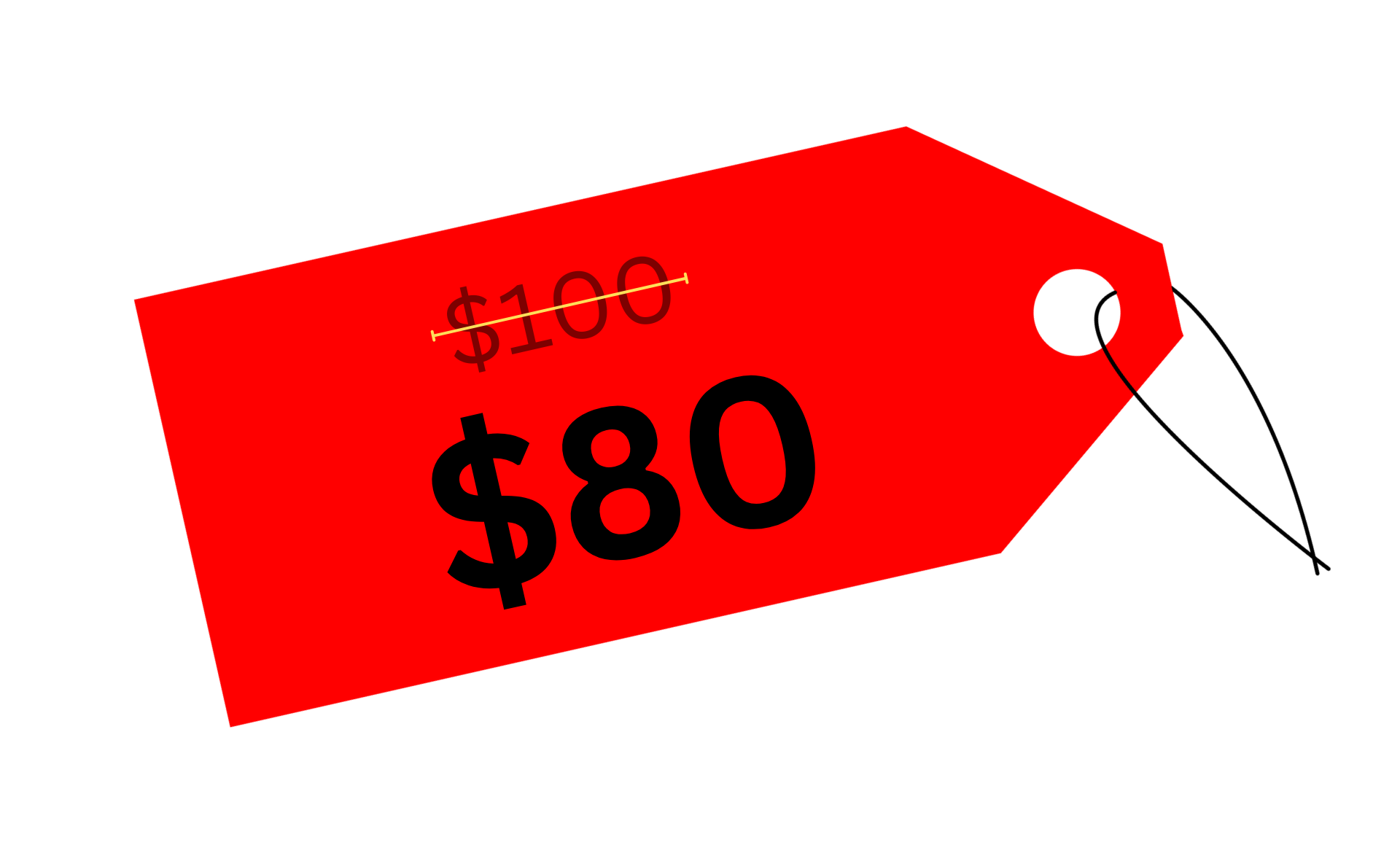
2. Charm pricing
Charm pricing involves ending prices with a 9 or 99 to make them appear lower than they are. This technique takes advantage of the left-digit effect, where consumers perceive prices like $19.99 as significantly cheaper than $20.
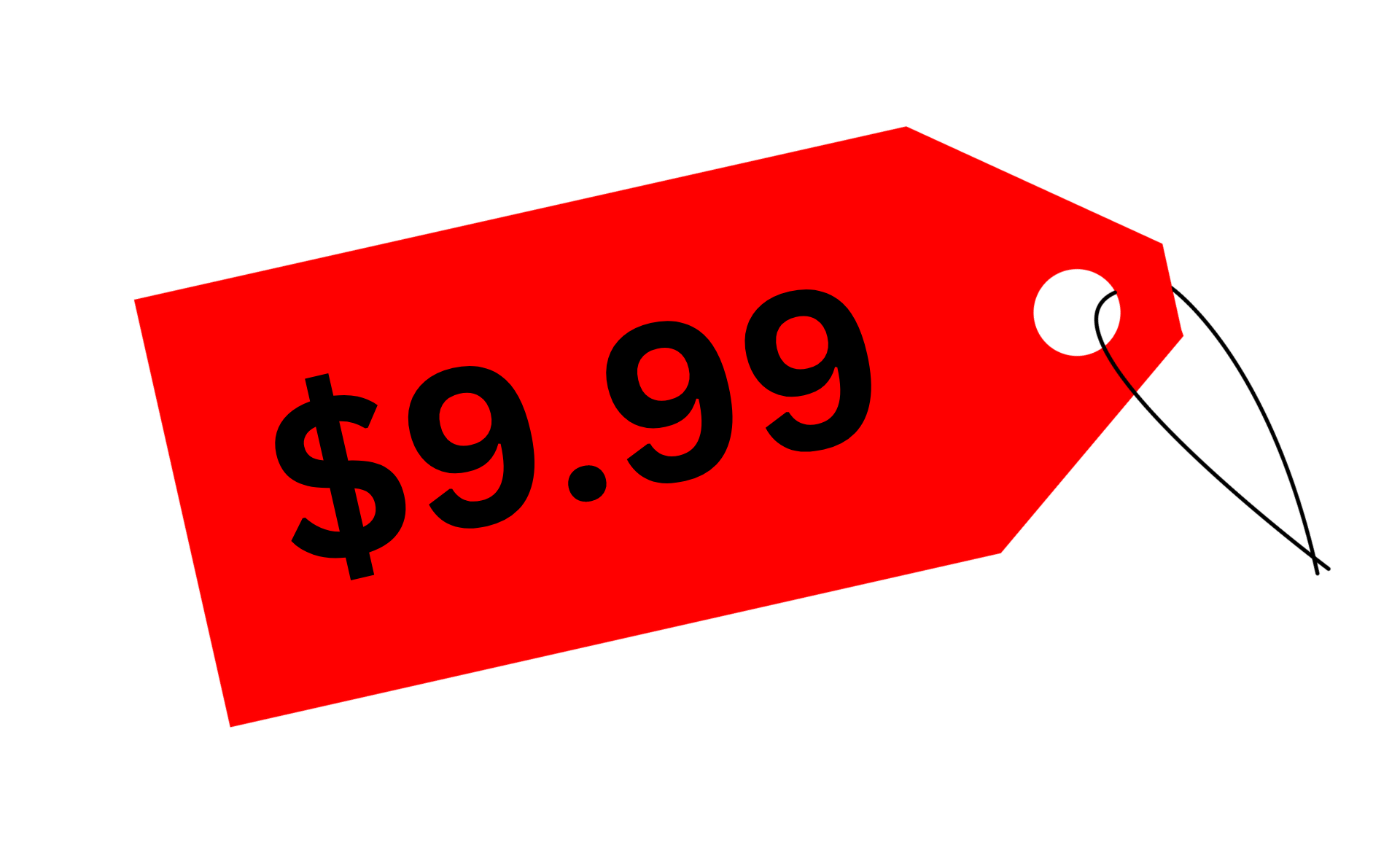
3. Odd-even pricing
Odd-even pricing uses odd numbers to signal bargains and even numbers to suggest quality. This method leverages psychological pricing to influence consumer perceptions and buying behavior.
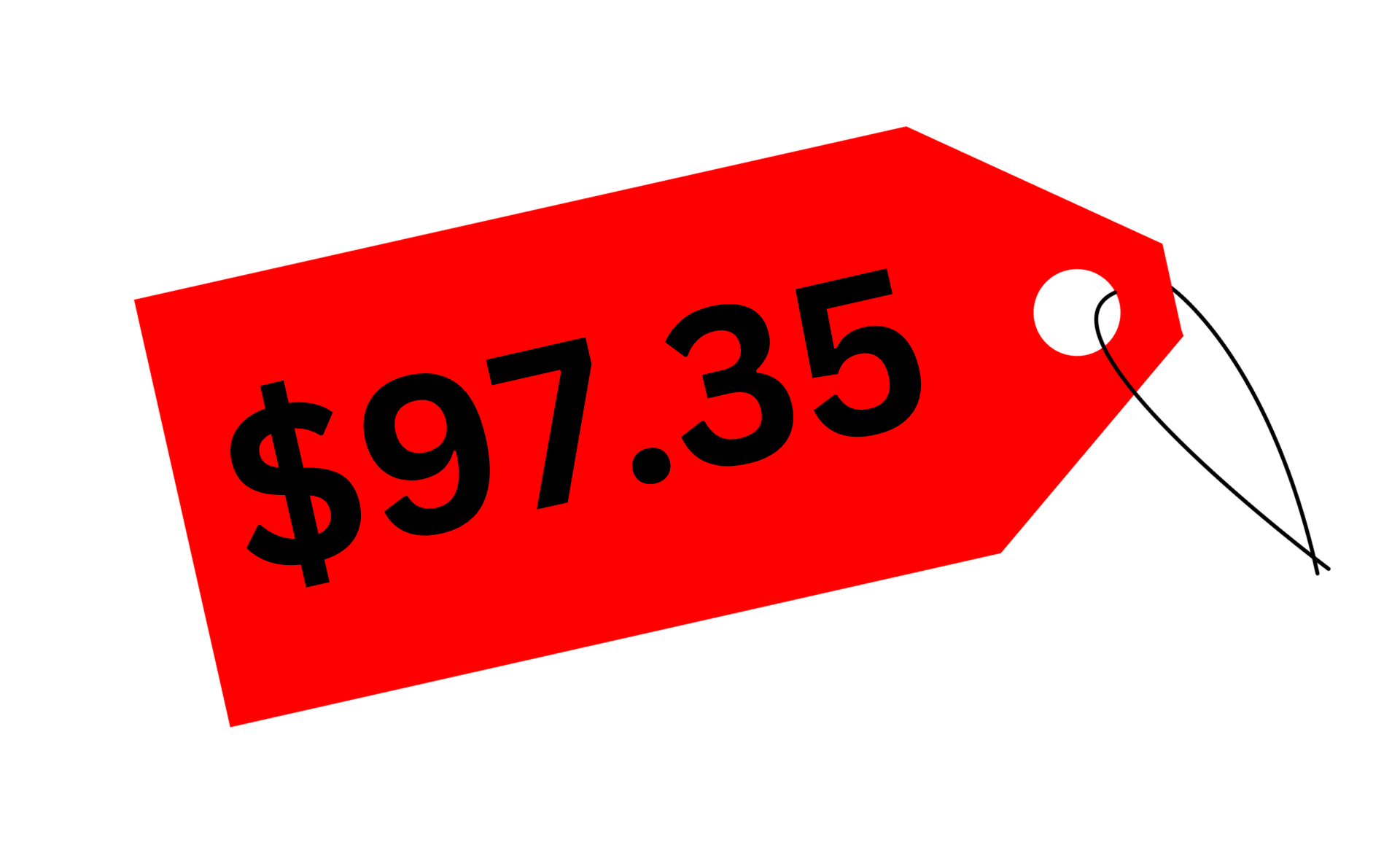
4. Product bundle pricing
Product bundle pricing involves selling multiple products together at a lower price than if purchased individually. This strategy increases perceived value and can boost sales by encouraging customers to buy more items.
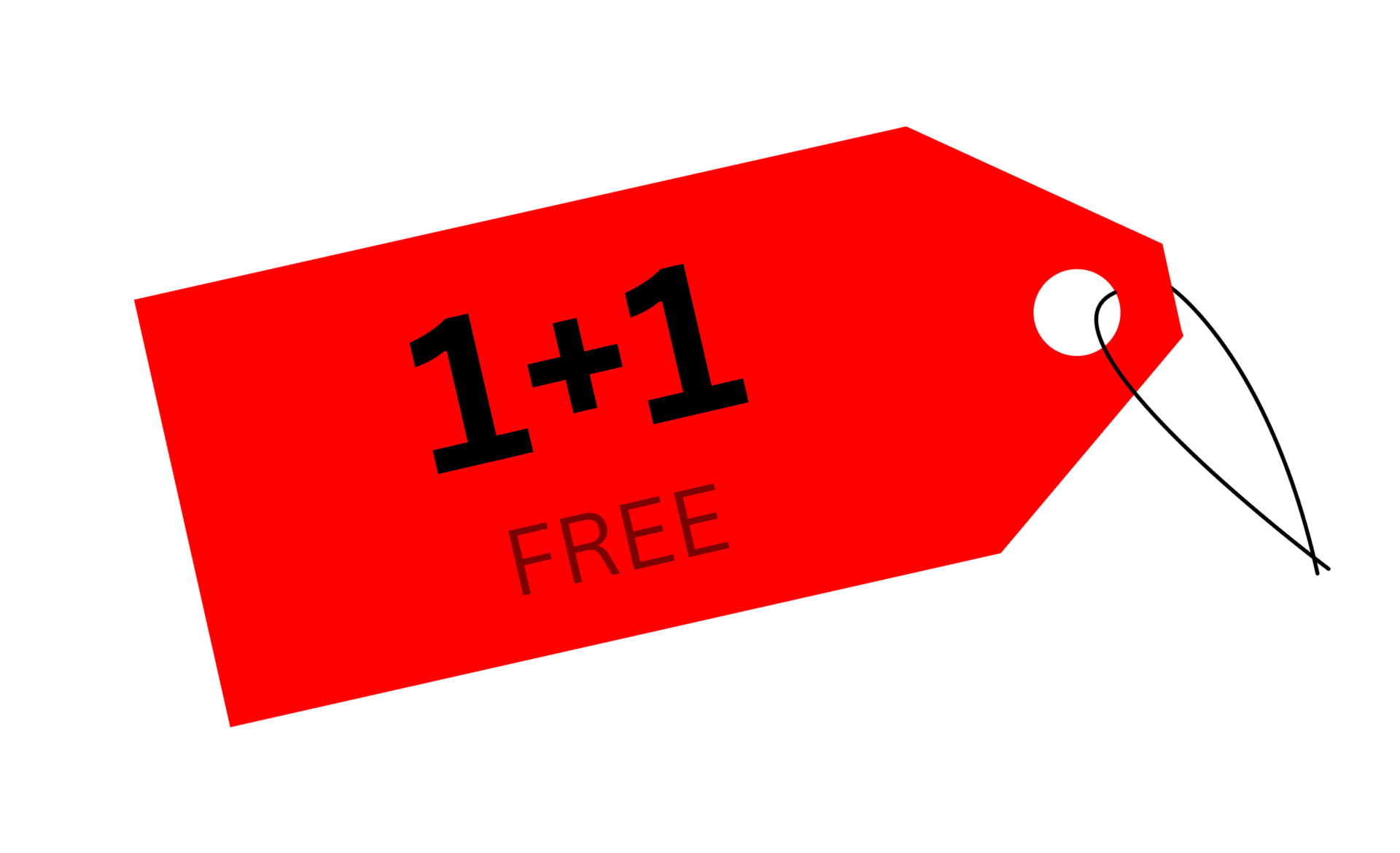
5. High-low pricing
High-low pricing involves setting prices high initially and then offering frequent promotions or discounts. This strategy attracts bargain hunters and can drive traffic to stores during sales periods.

6. Trial pricing
Trial pricing offers a product or service for free or at a reduced cost for a limited time. This approach reduces the perceived risk of purchase and encourages customers to try something new.
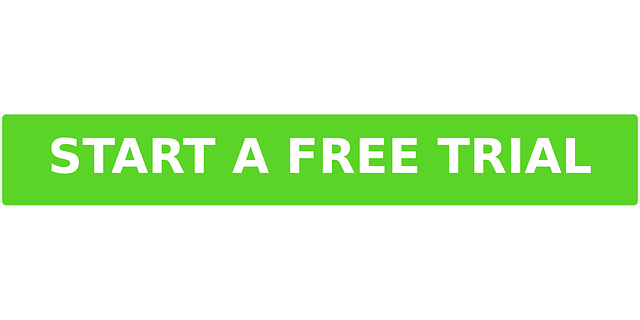
7. Analysis paralysis
Analysis paralysis occurs when too many choices overwhelm customers, making it difficult for them to make a decision. This can lead to no purchase being made at all. To avoid this you can encourage them to buy something they weren't planning for by making it more appealing and useful.
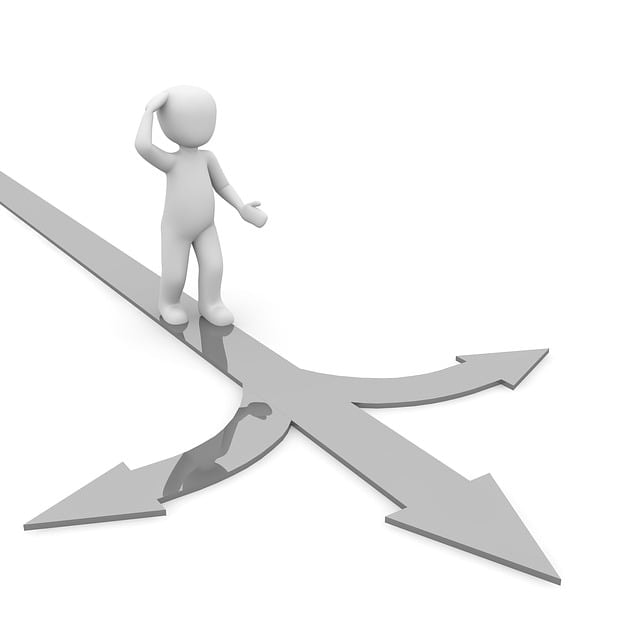
8. Decoy pricing
Decoy pricing introduces a less attractive option to make other options look more appealing. This technique helps steer customers towards a more profitable choice.

9. Centre stage effect
The center stage effect places the most profitable option in the middle of a range of choices to make it more attractive. This strategy uses the central position to draw attention and influence purchasing decisions.
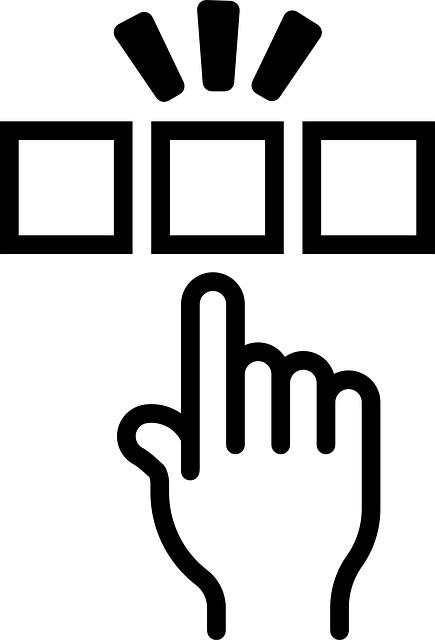
5. How to choose what's right for you?
Once you understand all of this and you are ready to make the next step in order to make the right decision you should:
-
Know your LTV/CAC ratio: Understand your Lifetime Value (LTV) to Customer Acquisition Cost (CAC) ratio. This helps ensure your pricing model supports business health.
-
Collaborate on pricing: Pricing should involve marketing, sales, product, and management. They help with positioning, packaging, managing, and targeting your audience effectively.
-
Develop buyer personas: Use available data to research who your customers are. Understand different segments to position your product based on their needs.
-
Create differentiated tiers: With clear buyer personas, offer different tiers. Figure out what different segments need (for example startups vs enterprises) to price and sell features effectively.
-
Use customer data for pricing: Base your pricing model on input from current and potential customers. Ask them what they want to avoid making random guesses that could fail.
How to track and analyze the pricing performance?
In order to know if you made the right decision and what works or not you need to track performance. These are the four methods to do it.
LTV/CAC Ratio
The Lifetime Value (LTV is an estimate of the average revenue that a customer will generate while they are a customer during their life) to Customer Acquisition Cost (CAC shows how much is spent on acquiring new customers) ratio helps you create a profitable pricing model.
-
How to calculate: Compare the lifetime value (LTV) of a customer to the cost of acquiring that customer (CAC). The ratio should be greater than one for you to stay profitable.
-
Why it matters: This ratio should be greater than one to ensure you don't lose money on each new customer. A low LTV/CAC ratio means it takes longer for a customer to cover their acquisition cost, which can lead to losses.
Gross MRR Churn Ratio
This measures the percentage of monthly recurring revenue (MRR) lost due to cancellations or downgrades.
-
How to calculate: Divide the total MRR churn for the month by the total MRR for the month, then multiply by 100.
-
Why it matters: It helps you understand how much revenue is lost due to cancellations or downgrades. A high ratio (above 5%) indicates significant revenue loss and potential customer dissatisfaction.
Expansion MRR
This shows revenue growth from existing customers through add-ons, upsells, and cross-sells.
-
How to calculate: Subtract the total expansion MRR at the beginning of the month from the total at the end of the month, divide by the total MRR at the beginning of the month, and multiply by 100.
-
Why it matters: Higher Expansion MRR means existing customers are spending more, showing you can deliver extra value and generate more revenue without high acquisition costs.
Upgrade MRR
This focuses on revenue from customers upgrading to higher plans.
-
How to calculate: Subtract the cost of the current plan from the cost of the upgraded plan.
-
Why it matters: More upgrades mean customers want advanced features. If Upgrade MRR isn't growing, it may be time to reassess your pricing strategy and the value offered in different tiers.
Conclusion
In conclusion, working on prices is crucial for SaaS companies who want to stay ahead.
Pricing dictates profit and how much value your products bring to customers and your business.
As customer needs and market conditions shift, SaaS businesses must adapt their pricing models to stay competitive.
Failing to update prices can lead to lost sales and missed opportunities.
By adjusting prices often, you can better manage costs, stay relevant, and keep customers satisfied.
The ability to change prices swiftly and effectively is a key factor in maintaining a strong market position.
This is only possible if you know all of the data we laid out here for you.
To make the best choice, you need to know all choices.
First step
If you want to make better, informed, and smarter business decisions brigit.dev can help you.
We are your one-stop-shop for building SaaS products that are their own best advertisements.
As a software agency, we don't just write code, but use our marketing, sales, and business knowledge to help you launch the best solution.
If you need a:
-
mobile app
-
web app
-
AI&blockchain integration
-
backend development
-
UI/UX design
We got you covered!
Contact us and start your business journey the right way!